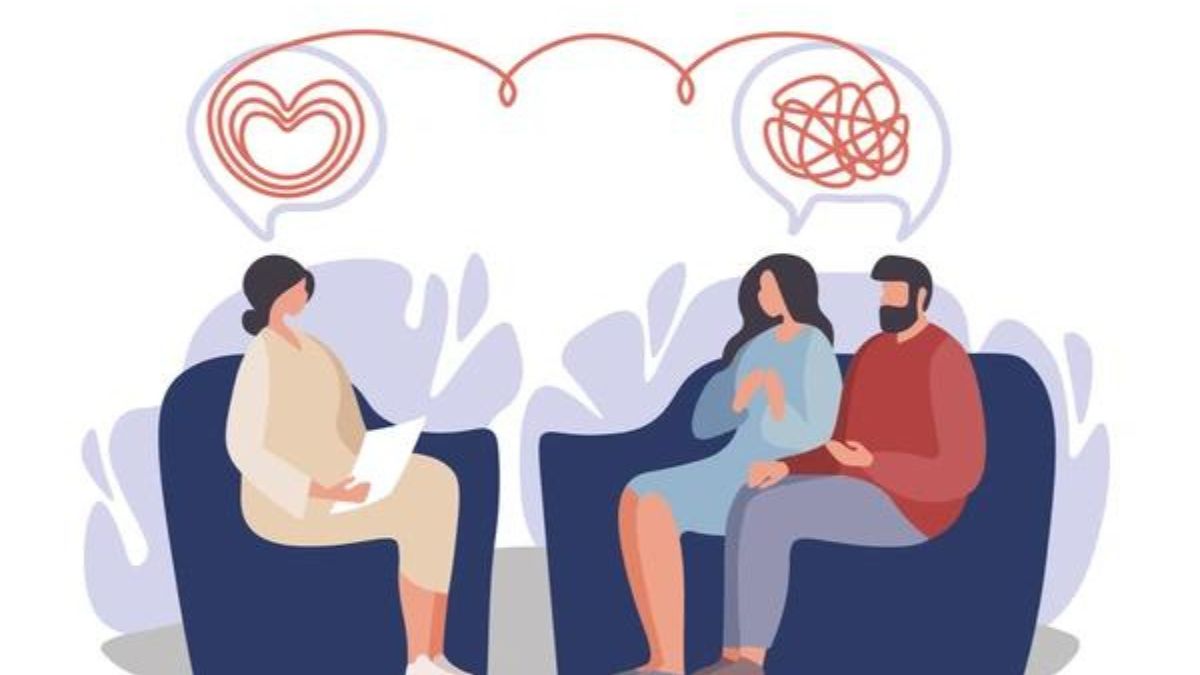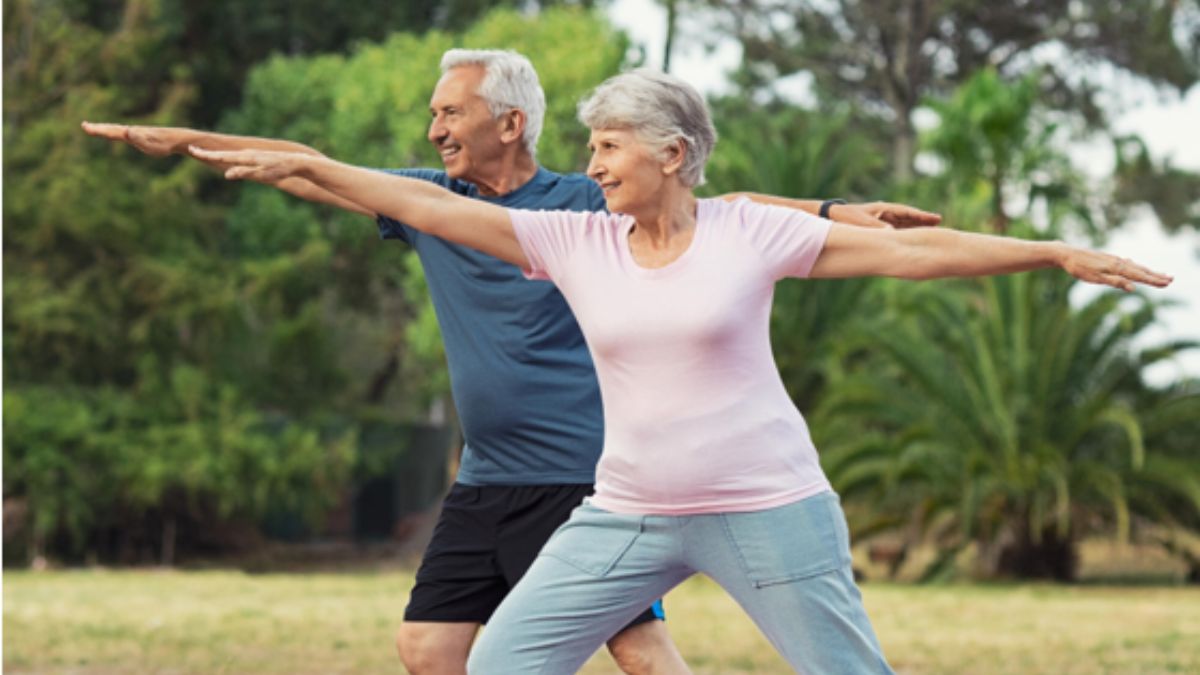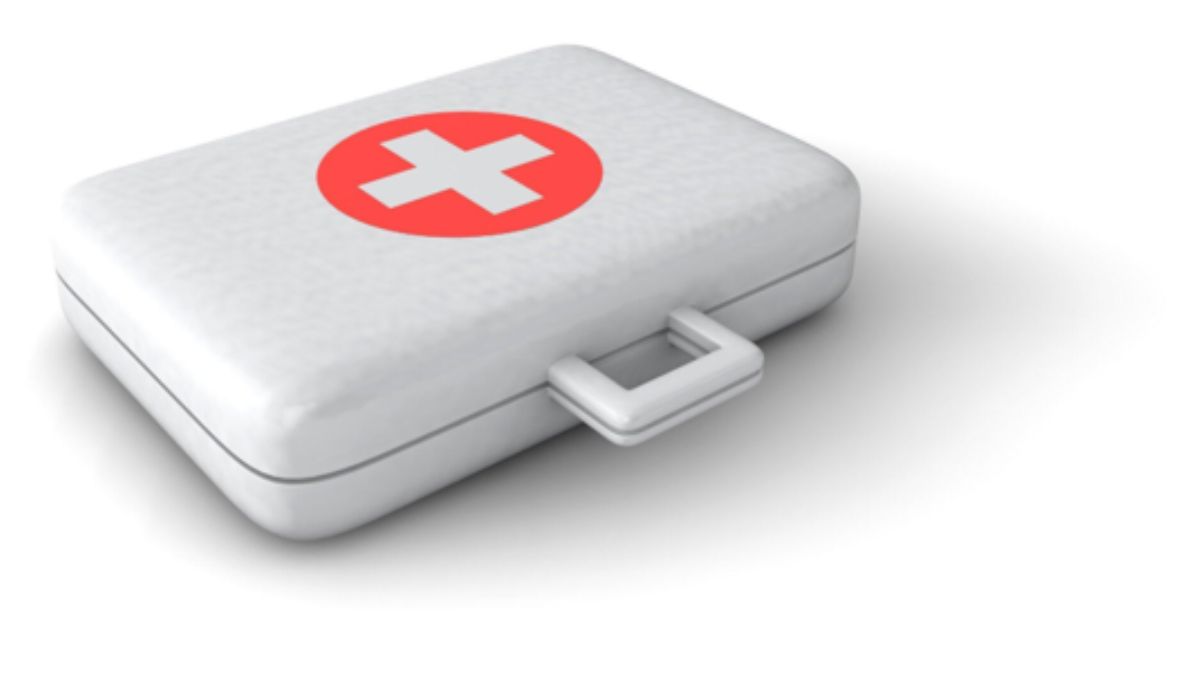HEALTH
Relationship Reboot: Why Couples Therapy Might Be the Missing Piece

Couples therapy is a powerful tool that can help partners navigate challenges in their relationship. Through open communication and professional guidance, couples can address underlying issues, improve communication skills, and strengthen their emotional connection.
Understanding the Role of Couples Therapy
Relationships are not immune to the winds of change in a rapidly evolving world. The fast-paced environment, societal pressures, and the prevalence of digital communication can induce unexpected stress in romantic partnerships. This is where professional support, such as that provided by couples therapy NYC, comes into focus. As relationships navigate the myriad pressures of modern life, couples therapy offers a constructive space to reinforce, rebuild, and rejuvenate the bond between two individuals.
Couples therapy is more than just a crisis management tool; it is a proactive step toward nurturing a relationship’s emotional and psychological health. It works to resolve partners’ current issues and lays the foundation for future resilience and mutual understanding. Therapy unveils the potential for growth and warmth in partnerships that may have hit rough patches or sought to solidify their bonds amidst life’s challenges.
The Value of Therapy in Modern Relationships
Today’s couples grapple with numerous challenges that can strain the strongest bonds. These may range from the complexity of blending families and careers to facing an unforeseen pandemic and its impact on personal lives. Couples therapy stands tall as an avenue that addresses distress and affirms partners’ commitment to each other. In the hands of a skilled therapist, dyads find a wealth of resources to facilitate emotional closeness, conflict management, and overall relationship satisfaction. The ultimate goal is creating a partnership that thrives on mutual respect, intimacy, and, most importantly, effective communication, laying a robust foundation for the future.
Communication Breakthroughs through Therapy
Therapy sheds light on the nuances of communication, bringing to the fore how misinterpretation and silence can deteriorate relationships. In these interactive sessions, partners become privy to the art of expressing themselves transparently while concurrently being receptive to their partner’s discourse. Nuanced techniques such as ‘I’ statements, active listening, and empathetic responses are tools taught within the therapeutic setting that transfer into everyday life, facilitating healthier and more meaningful connections.
Navigating Challenges Together with Professional Guidance
Every couple brings to the therapy room a different set of challenges and experiences. Some may be working through infidelity, others grappling with issues of trust or different parenting styles. The therapist’s role is to cut through the noise and guide each person to understand their partner’s point of view. Couples therapy thus serves as an invaluable platform for constructively tackling issues head-on. Supporting evidence from authoritative sources underscores the profound capacity of therapy not just to resolve relationships in disarray but to prepare partners for the ups and downs that the future may hold.
Diverse Methods in Couples Therapy
The landscape of couples therapy is rich with diverse techniques and methodologies. Some therapists might draw upon cognitive-behavioral techniques to alter unhealthy interaction patterns. In contrast, others might use narrative therapy to help partners reframe their stories more positively. Approaches like the Gottman Method are backed by years of research focusing on the minutiae of interpersonal communication and affection. In contrast, Emotionally Focused Therapy hinges on fostering secure attachment bonds. Professionals often seamlessly integrate these approaches, ensuring each session is meticulously tailored to the distinctive narratives of the couple in treatment.
The Role of Self-Reflection and Growth in Healing Partnerships
While a couple-centric focus is a hallmark of couples therapy, the individual’s self-reflection and personal growth journey are equally critical. In the therapy room, one often discovers the peculiarities of one’s behavior, how past experiences shape the present, and how one’s mental scripts play out in the relationship. This voyage of self-awareness can contribute immensely to relationship satisfaction as individuals learn to bring their best selves to the partnership.
Renewing Intimacy: A Pathway for Reconnection in Therapy
One aspect of relationships that often brings couples to therapy is the loss or reduction of intimacy. The multidimensional nature of intimacy encompasses physical touch, emotional bonding, and intellectual connection. Therapy helps partners navigate the complex layers that impede intimacy, such as unresolved conflict, stagnant routines, or emotional disconnect. The therapist acts as a guide, helping couples to chip away at these barriers and foster a revitalized pathway to connection, demonstrating the role of vulnerability and open communication as key ingredients to restoring intimacy. As couples explore how to bring back intimacy in a marriage, they often find new ways to connect that can reignite their passion and strengthen their bond.
Seeking Therapy Beyond Crisis: Proactive Relationship Care
The notion that therapy is exclusively for times of crisis is gradually changing. Enlightened couples recognize that therapy can serve as a wellness tool for the relationship, not unlike regular health check-ups. Proactive engagement in couples therapy can address emerging issues, reinforce positive patterns, and nurture growth. Partners who regularly invest in their relationship’s health are often better equipped to handle stressors and transitions, and they enjoy the added benefit of a deepened bond and mutual understanding fostered through consistent therapeutic work.
Finding the Right Therapist for Your Relationship Journey
The selection process in finding a couples therapist who can best understand and support a couple’s unique journey can itself be a path of discovery. Researching and conversing with potential therapists can unveil much about their methodologies, compatibility with the couple, and overall therapeutic goals. When a mutual comfort level is established between the therapist and the couple, the therapy sessions are more apt to be productive, impactful, and transformative, making the journey through therapy not only necessary but indeed inviting and rewarding.
Couples therapy, with all its facets and forms, stands as a testament to the determination of partners to better their bond. Through a collaborative process that champions communication, understanding, and growth, couples can forge a more resilient, fulfilling, and loving relationship. Much like navigating uncharted waters, therapy can steer couples back to the safety of harbored connection, guiding them to weave stronger sails to face the voyage ahead together.
HEALTH
Living Well in Later Years: Lifestyle Tips for the Elderly

Aging brings change, but it doesn’t have to slow anyone down. With the right habits, seniors can stay active, sharp, and independent. It’s not just about living longer, it’s about living better. Small changes in daily routines can improve both mood and mobility. Staying connected and making time for health goes a long way. It helps to focus on what’s still possible rather than what’s out of reach. Start making those changes today with these helpful lifestyle tips for the elderly.
Stay Physically Active
Regular movement helps keep joints flexible and muscles strong. Simple activities like walking or stretching are easy to add to a daily routine. Light exercise can also help with sleep and energy levels.
Staying active lowers the risk of heart issues and improves balance. Even gardening or household chores count as movement. The key is consistency over intensity.
Keep the Mind Sharp
Mental exercises are just as important as physical ones. Reading, puzzles, or learning something new helps keep the brain alert. Social interaction also keeps the mind engaged.
Avoid long hours of isolation to prevent mental decline. A daily habit of learning or conversation boosts memory and mood. These small actions can help maintain mental sharpness over time.
Focus on a Balanced Diet
What you eat affects how you feel and function. Seniors should aim for meals rich in fiber, vitamins, and lean proteins. Stay hydrated and limit processed foods.
A well-balanced diet supports brain and heart health. It also helps with digestion and energy. Food choices can play a major role in daily well-being.
Prioritize Sleep and Rest
Rest is necessary for healing and energy. Set a regular sleep schedule that suits your body’s natural rhythm. Avoid caffeine or heavy meals before bedtime. Keep the bedroom dark and quiet to improve sleep quality.
A short nap during the day is fine, but too much daytime sleep may affect night rest. Good sleep habits lead to better focus and strength.
Build Strong Social Connections
Spending time with others helps reduce stress and loneliness. Friends, family, or even group activities can give life meaning. Community centers and clubs are great places to meet new people.
Staying socially active also supports emotional health. Try to stay in touch even with short visits or phone calls. This is where insights into senior lifestyle trends show how important connection is to overall wellness.
Stay on Top of Medical Needs
Regular checkups help prevent small issues from becoming bigger. Keep track of medications and understand how they work. Talk to your doctor about any changes in how you feel.
Preventive care like screenings and vaccines are important. Staying informed gives peace of mind. Health care should be part of the routine, not just a reaction.
Discover Later Years Lifestyle Tips for the Elderly
A fulfilling senior life is within reach. It starts with small steps in the right direction. Focus on habits that support the body, mind, and relationships.
Keep routines simple and sustainable. It’s never too late to build a healthier lifestyle. Use these tips to make every day count. Growing older can still mean growing well.
Here to explore more? Our blog’s got you covered.
HEALTH
Expert Plastic Surgeons Transforming Beauty and Confidence

Looking good often leads to feeling good. Many people choose plastic surgery to enhance their beauty and boost their self-esteem.
But choosing the right plastic surgeons are not easy. It requires careful research and consideration. This article will guide you through important tips to help you find an expert plastic surgeon who can transform your appearance and improve your confidence.
Check the Surgeon’s Credentials
The first step in finding an expert plastic surgeon is to check their credentials. Make sure the surgeon is board-certified by a recognized medical board.
Certification proves that the doctor has the right training and skills to perform plastic surgery safely. You can visit medical board websites to verify their license and check for any past complaints or issues.
Look at Before and After Photos
A good way to measure a plastic surgeon’s skill is by looking at their previous work. Most surgeons have photo galleries of past patients who have had similar procedures. Study these photos closely.
Look at the changes made, the natural look of the results, and whether the outcomes meet your expectations. These photos can give you a clear idea of the surgeon’s ability to enhance beauty while maintaining a natural appearance.
Read Patient Reviews and Testimonials
Reading what past patients say can help you decide if a surgeon is right for you. Look for reviews on websites, social media, and clinic pages. Positive reviews often highlight the surgeon’s skill, bedside manner, and how well they handle questions and concerns.
Be cautious of any surgeon who has many negative reviews or no reviews at all. Honest feedback from other patients gives you insight into the overall experience and satisfaction rate.
Consult and Ask the Right Questions
Booking a consultation is an important step in the decision-making process. During your consultation, ask about the procedure, the risks, the recovery time, and what results to expect. It is also a good time to see if you feel comfortable with the surgeon.
Good surgeons are patient, informative, and honest. They should not pressure you or make unrealistic promises. Also, ask if they offer non-invasive body treatments, especially if you are looking for options with shorter recovery times and less risk.
Consider the Clinic’s Facility and Staff
An expert surgeon should operate in a clean, accredited clinic or hospital. Make sure the facility meets safety standards and has modern equipment. Friendly and professional staff also make a big difference in your experience.
They help with scheduling, follow-ups, and answering questions. A well-organized and supportive team reflects a high level of care and professionalism from the surgeon and clinic.
All About Expert Plastic Surgeons
Choosing the right plastic surgeon is a big decision. Your safety, beauty, and confidence are at stake, so take your time and do the necessary research. Check credentials, review past work, read patient reviews, ask questions, and visit the facility.
These steps will help you find an expert who can deliver natural, beautiful results and improve your self-confidence. With the right surgeon, your journey to enhancing your appearance will be safe, smooth, and satisfying.
Looking for more tips and ideas? We’ve got you covered. Check out some of our other posts now.
HEALTH
What You’ll Learn in CPR & First Aid Training Courses

Have you ever wondered what you would do if someone collapsed in front of you or had a serious injury? It’s a scary thought, but being prepared makes a huge difference. CPR & First Aid training courses teach you exactly how to handle emergencies like this.
In this blog post, you’ll discover what skills you’ll learn, how these courses work, and why this training is so important. By the end, you’ll feel ready to take the next step toward saving lives.
Learn to Act Fast in Emergencies
One of the first things you’ll learn in CPR & First Aid training is how to stay calm when an emergency happens. These courses show you how to think clearly and take action when seconds matter. Whether someone has trouble breathing, is bleeding badly, or has passed out, knowing what to do right away can help save their life.
You’ll learn how to assess the situation, check for danger, and start helping before professionals arrive. These steps can make all the difference.
Discover the Power of CPR
CPR stands for Cardiopulmonary Resuscitation. It sounds complicated, but you’ll learn that it’s easy to do. CPR is a method used when a person’s heart stops beating.
You’ll find out how to push down on the chest in a steady rhythm and how to give breaths if needed. These actions help move oxygen through the body until help comes. CPR is a lifesaving skill, and anyone can do it once they are trained.
Understand How to Use an AED
An AED is a device that gives a shock to the heart to help it start beating again. During your training, you’ll learn how to use it step by step. The machine talks to you and tells you what to do, which makes it easier.
You’ll also learn where to find AEDs in public places and why quick use is so important. Using an AED right away can increase a person’s chances of survival, and you’ll be ready to do just that.
Learn to Handle Common Injuries
Every day, accidents happen all the time. Someone might cut themselves, fall, or have a burn. In CPR & First Aid training, you’ll learn how to help with these injuries.
You’ll find out how to clean and cover a wound, treat a burn, or wrap a sprain. You’ll also learn what not to do so you don’t make things worse. Knowing how to give the right care right away helps someone feel better and heal faster.
Be Ready for Choking and Allergic Reactions
Choking is another emergency that can happen suddenly. These courses show you how to spot the signs and what to do to help. You’ll learn how to perform back blows and the Heimlich method.
Allergic reactions can also be dangerous. You’ll learn how to use an epinephrine auto-injector and how to help the person stay safe until help comes. These are real situations that anyone could face, and now you’ll know what to do.
If you’re curious about even more topics covered in these lessons, get more info by visiting your local training center or health organization.
First Aid Training: The Power to Save Lives
Taking CPR & First Aid training courses gives you the skills to help others during some of life’s scariest moments. You don’t need to be a doctor or nurse. Just knowing what to do during an emergency can save lives.
These courses help prepare you for real-life emergencies in a simple, hands-on way. Did this guide help you? Browse the rest of this section for more advice on a variety of topics.
-

 HEALTH1 year ago
HEALTH1 year agoIntegrating Semaglutide into Your Weight Loss Plan: A Practical Guide
-

 HOME IMPROVEMENT1 year ago
HOME IMPROVEMENT1 year agoHow to Choose the Perfect Neutral Area Rug for Every Room
-

 LAW1 year ago
LAW1 year agoPost-Divorce Considerations in California: Modifications and Long-Term Planning
-

 LAW1 year ago
LAW1 year agoTeenage Drivers and Car Accidents in California: Risks and Parental Liability
-

 CONSTRUCTION1 year ago
CONSTRUCTION1 year agoConstruction Site Safety Regulations in New York and Your Rights as a Worker
-

 FINANCE1 year ago
FINANCE1 year agoDigital Asset Management in Florida Estate Planning
-

 LAW1 year ago
LAW1 year agoKentucky’s School Football: Concussions, Injuries, and Legal Options
-

 LAW1 year ago
LAW1 year agoGang Activity and Criminal Charges in CA: Protecting Your Rights
